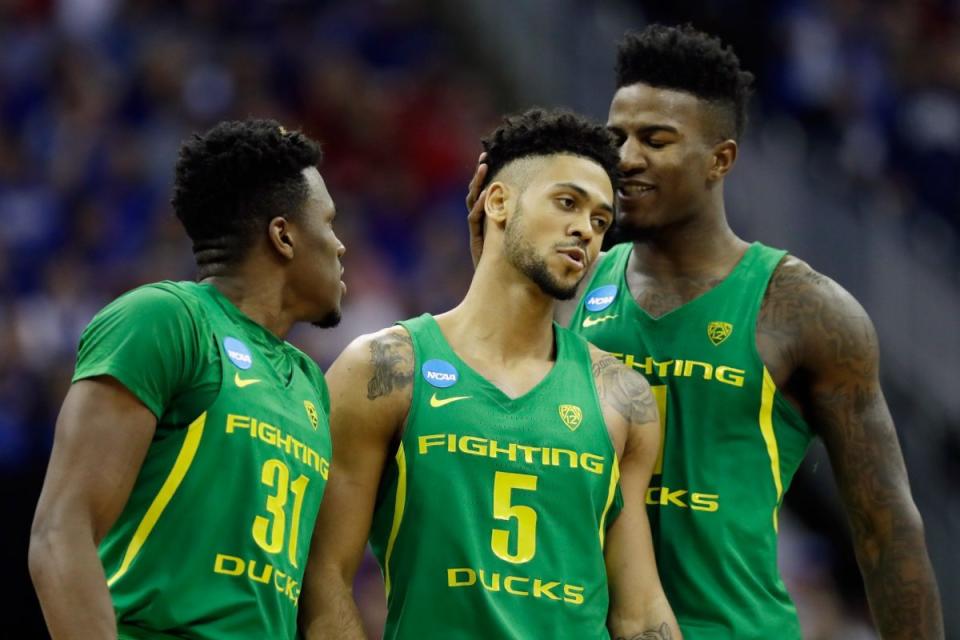Why it's OK that there are 182 early-entry candidates for this year's NBA draft

The NBA announced Tuesday that 137 college players and 45 international prospects filed as early-entry candidates for this year’s draft even though only 60 guys will be selected.
Contrary to all the wisecracks you may have read on social media, that’s not nearly as foolish as it sounds.
Every college player who did not hire an agent preserved the right to withdraw from the draft and return to school by the NCAA’s May 24 deadline. Many will do exactly that if they’re not invited to the draft combine or if they don’t receive the feedback they sought during workouts with NBA teams.
Take Utah’s David Collette, a 6-foot-10 junior who submitted his paperwork to the NBA despite having little hope of being drafted. He recognizes that there’s hardly any downside to gathering feedback from NBA personnel, trying to impress a few teams during workouts and then coming back to school for his senior year armed with a little extra information.
“I made this decision, like, last year,” Collette told the Salt Lake Tribune. “Basically once they said you could enter into the draft with no penalties. It’s a resource that we have that you might as well take advantage of.”
There are still always college underclassmen who remain in the draft even though it’s unlikely they’ll be selected, but don’t assume all of them are making uninformed, ill-advised decisions.
From Wesley Matthews, to Kent Bazemore, to J.J. Barea, to Matthew Dellavedova, there are dozens of NBA players who have carved out a niche as a role player despite going undrafted. Furthermore, prospects who can’t make the NBA have other avenues of playing professional basketball in Europe, Asia or Australia.
Two years ago, critics reamed NC State’s Trevor Lacey for giving up the final year of his college career even though he was a fringe NBA prospect at best. They neglected the fact that Lacey was already almost 24 years old, young by real-life standards but not for a pro basketball hopeful.
For Lacey, staying in school would have meant forfeiting another year of earning potential in a career with a notoriously short money-making window. He went unselected in the NBA draft, but he has thrived the past two seasons in Italy’s top league, putting up 10.8 points per game this year as a starter for fourth-place Sassari.
Among the prospects from this year’s draft class who could follow in Lacey’s footsteps is Oregon’s Tyler Dorsey, who turned pro and hired an agent after scoring 20 or more points in all five of the Ducks’ NCAA tournament games.
Dorsey may have a difficult time cracking an NBA roster since he’s undersized to play shooting guard in the league, but having dual citizenship in Greece could make the 6-foot-4 sophomore especially attractive to top European professional teams. A Greek team could sign Dorsey without burning one of the exemptions it typically must use to sign an American prospect.
It isn’t easy to forge a successful career as a basketball nomad overseas or in the D-league, but for some prospects that’s the best available option.
Many early-entry candidates come from poor backgrounds and have families who can’t wait another year for financial support. Other players don’t enjoy college and want to devote their time to basketball fully. A few have already earned a college degree and rightfully feel there isn’t much they can do to raise their stock further by returning to school for one more year.
All that really matters is that the players who enter the draft are well informed about where they’ll be selected, something that is much easier now that the NCAA reinstalled the player-friendly rule giving prospects time to test the waters and get feedback on where they stand.
For a few years, players had to decide whether to enter the draft or return to school in April, leaving no time for them to work out for NBA teams, participate in the draft combine and get feedback from pro scouts. That’s no longer an issue since last year when the NCAA pushed the deadline to return to school back to 10 days after the May combine.
Hopefully the 137 college underclassmen who have entered this year’s draft take advantage of the chance to make an informed decision.
As long as they understand the risks, they can do what’s best for them.
– – – – – – –
Jeff Eisenberg is the editor of The Dagger on Yahoo Sports. Have a tip? Email him at daggerblog@yahoo.com or follow him on Twitter!

 Yahoo Sports
Yahoo Sports 

